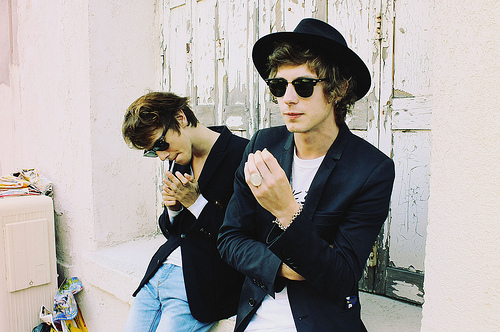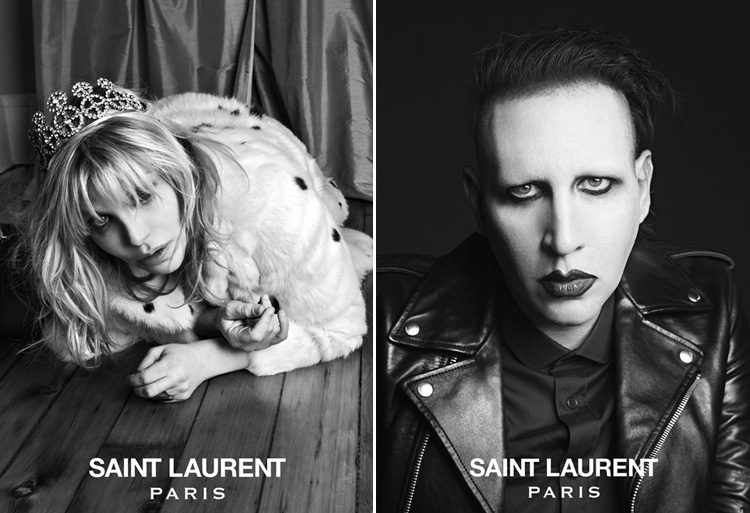
Meet Josh.
Josh is a 30-year-old artist/chef who lives in a converted warehouse in Hackney, east London. Josh has a beard, glasses and cares about the provenance of his coffee. He pays his tax, doesn't have a 9-to-5 job and, along with his five polymathic flatmates, shuns public transport, preferring to ride a bike.
On paper, Josh is the archetypal hipster – just don't call him one: "I don't hate the word hipster, and I don't hate hipsters, but being a hipster doesn't mean anything any more. So God forbid anyone calls me one."
At some point in the last few years, the hipster changed. Or at least its definition did. What was once an umbrella term for a counter-culture tribe of young creative types in (mostly) New York's Williamsburg and London's Hackney morphed into a pejorative term for people who looked, lived and acted a certain way. The Urban Dictionary defines hipsters as "a subculture of men and women, typically in their 20s and 30s, that value independent thinking, counter-culture, progressive politics". In reality, the word is now tantamount to an insult.
So what happened? Chris Sanderson, futurologist and co-founder of trend forecasting agency The Future Laboratory, thinks it's simple: "The hipster died the minute we called him a hipster. The word no longer had the same meaning."
Fuelling this was a report last month from researchers at the University of New South Wales who discovered that the hipster look was no longer "hip". In short: the more commonplace a trend – in one instance, beards – the less attractive they are perceived to be. And in 2014 we may have reached "peak beard". Could it be that the flat-white-drinking, flat-cap-wearing hipster will soon cease to exist?
Sanderson thinks it's more a case of evolving than dying. Talking to The Observer last week, he suggested there are now two types of hipster: "Contemporary hipsters – the ones with the beards we love to hate – and proto-hipsters, the real deal." And herein lies the confusion.
"Historically, proto-hipsters have been connoisseurs – people who deviate from the norm. Like hippies. Over the years, though, they inspired a new generation of young urban types who turned the notion of a hipster into a grossly commercial parody. These new hipsters want to appear a certain way, to be seen to be doing certain things, but without doing the research. So they appropriated the lifestyle and mindset of a proto-hipster."
It's a definition neatly summarised in the song Sunday, by Los Angeles rapper Earl Sweatshirt: "You're just not passionate about half the shit that you're into."
The problem is that it is now almost impossible to differentiate between the two. "Hipsters are more interested in following; proto-hipsters are more interested in leading. Yet they look the same, so how are people to know the difference?"
This lack of visual disparity has probably led to society's fondness for hipster-bashing. As Alex Miller, UK editor-in-chief of Vice, explains: "I couldn't define a hipster. I guess it's 'The Other'. But as a general term it's blown up because people finally realised they had a word to mock something cool and young which they didn't understand."
It's an age-old scenario. In Distinction, his 1979 report on the social logic of taste, French academic Pierre Bourdieu wrote that "social identity lies in difference, and difference is asserted against what is closest, which represents the greatest threat". So our inability to define a hipster merely fuels the enigma.
"And as you can imagine, this is greatly exasperating to proto-hipsters," says Sanderson.
It hasn't always been like this. While the definition of hipster hasn't altered vastly over the years, there was a time when it was considered to be something both meaningful and specific.
The word was coined in the 1940s to define someone who rejected societal norms – such as middle-class white people who listened to jazz. Then came a reactive literary subculture, realised through the work of beatniks such as Jack Kerouac and William Burroughs. It was Norman Mailer who attempted to define hipsters in his essay The White Negro as postwar American white generation of rebels, disillusioned by war, who chose to "divorce oneself from society, to exist without roots, to set out on that uncharted journey into the rebellious imperatives of the self".
A decade later, we had the counter-culture movement – hippies who carried their torch in a fairly self-explanatory fashion, divorced from the mainstream. The word mostly vanished until the 1990s, when it was redefined so as to describe middle-class youths with an interest in "the alternative".
In the "noughties", hipsters became the stuff of parody, via Chris Morris and Charlie Brooker's satire Nathan Barley, which earmarked the "twats of Shoreditch". Nowadays, though, anyone can appear to be a hipster provided they buy the right jeans. From the twee Match.com adverts featuring hipster-style couples to the cocktails served in jam jars at the trendy incomer bar the Albert in EastEnders, "the idea of the hipster has been swallowed up by the mainstream", says Sanderson.
Luke O'Neil, a Boston-based culture writer for the online magazine Slate,says it is the same in the US. "I've even noticed what I call the meta-hipster: a person who sidesteps the traditional requirements and just wants to skip ahead to the status. Like putting on glasses and getting a tattoo somehow makes you a hipster," he says.
But while Miller agrees that hipster has morphed into a negative term, it is less about the word and more about what it represents: "Growing up, we just used other words – 'scenester' at university, 'trendies' at school – and they mean the same. Hipster has simply become a word which means the opposite of authentic."
Not everyone agrees. At Hoxton Bar and Grill in east London, 24-year-old graduate Milly identifies with hipsters: "I mean, that's why we all live in east London. It just feels so real, like something creative and cool is happening."
Manny, a 28-year-old singer who has lived in Dalston for more than five years, likes the sense of community: "Young people haven't got jobs or work and they need it. It's like a tribe, like goths. I hope hipsters aren't dead, because I just signed a year lease on my flat."
Miller adds: "We've never written about hipsters as a subculture at Vice because I don't think hipsters are a subculture. However, I do appreciate that people like the idea of belonging to something, so I suppose on that level the idea exists." As O'Neil explains: "Whoever said [hipsters] wanted to be unique? I think it's more about wanting to belong."
So what next? "I think hipsters will have an overhaul. There will be a downturn in this skinny-jean, long-haired feminised look over the next few years owing to the rise of the stronger female role model," says Chris Sanderson." And in its place? "A more macho look, almost to the point of caricature, in a bid for men to reinforce their identity."
Perhaps this explains the phenomenon of "normcore", a term coined by New York trend agency K-Hole in their Youth Mode report last autumn. Though widely derided by the fashion world, this plain, super-normal style is arguably a reaction to the commodification of individuality, the idea that you can buy uniqueness off the peg in Topshop. "Normcore doesn't want the freedom to become someone," they say. "Normcore moves away from a coolness that relies on difference to a post-authenticity that opts into sameness."
It sounds like a joke but, says Sanderson, it might actually might be a thing: "It's the opposite of what people think is hip now, but it's also very masculine – which ties in to the return to blokeiness."
But for many, including Josh, the desire to categorise people is infuriating. Arvida Byström is a Swedish-born, London-based artist, photographer and model. Though sometimes identified as a hipster aesthetically speaking, her work, which focuses on sexuality, self-identity and contemporary feminism, would suggest she is much more than that. Sanderson would describe her as "someone who leads not follows".
She balks at the idea of being a hipster: "I haven't been aware of people calling me a hipster. I certainly don't identify as one. What is a hipster, anyway? It is such a general term. I don't even know if they exist any more."
But as Josh says: "I don't see why you can't just be a guy in east London liking the stuff that's around without being branded as something."



